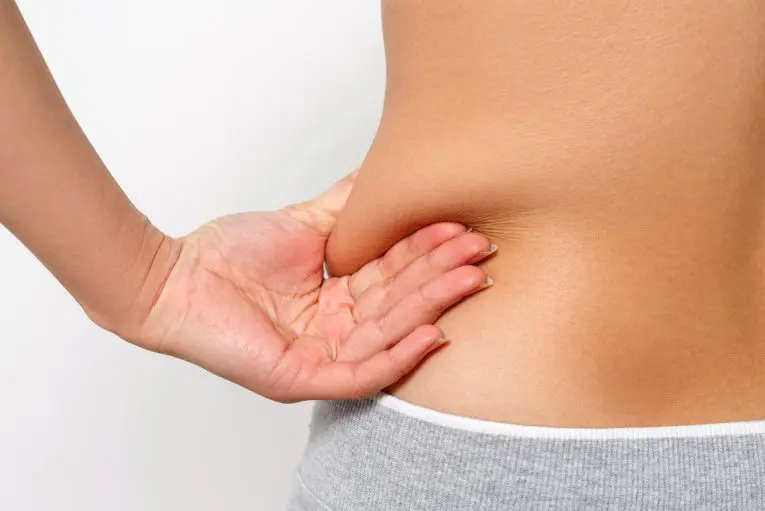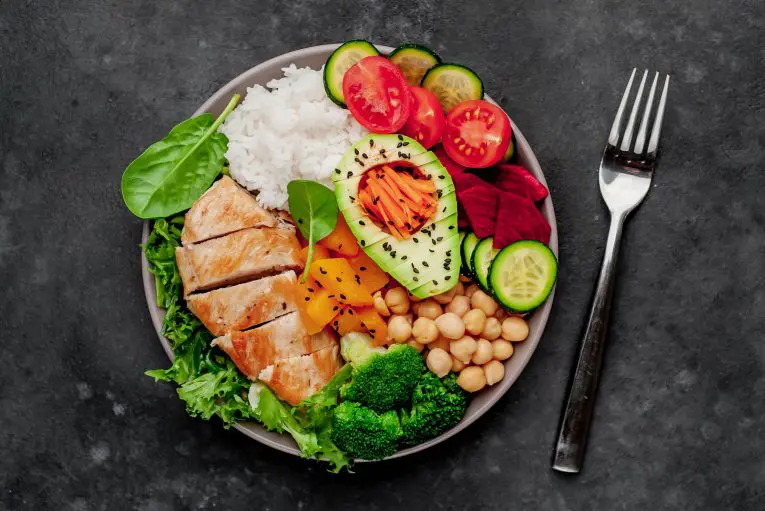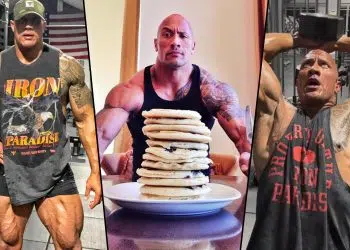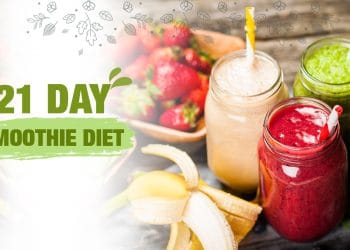Anyone can lose weight but you see weight loss doesn’t always necessarily result in a better-looking figure or appearance in general. Now, in some cases, rapid weight loss is truly the only option, especially for health reasons. But if it can be helped, this is never the best option. The body is not designed to accommodate rapid physiological changes and many times, it shows after a period of rapid weight drops.
So the question that should be asked by anyone who wants to slim down is how to lose fat without losing muscle. This ensures that you’re not only dropping the pounds but that you’re doing it healthily. Not to mention, you’ll look much sexier and fit because everyone knows muscles make everything look better (especially that ass).
So in this guide, we’ll explain how to preserve and even build new muscle while torching fat and we promise you’ll be much more pleased taking this route.
Weight Loss vs. Fat Loss
While the two can be used interchangeably to describe fitness goals; there’s a difference if you really want to get technical. Although, we will use the word “weight loss” throughout the article while referring to fat loss.

Weight loss
Weight loss is just that; the closer the dial (or digits) on the scale gets to zero, the better. Weight can be anything from fat, to water/sweat, muscles, glycogen, poop, and anything else you can think of.
While it’s OK and even sometimes necessary to aim for less bodyweight by any means possible (e.g, competitive bodybuilding, making weight for combat sports, surgery, etc), focusing on losing body fat will give you the most bang for the buck.
Level Up Your Fitness: Join our 💪 strong community in Fitness Volt Newsletter. Get daily inspiration, expert-backed workouts, nutrition tips, the latest in strength sports, and the support you need to reach your goals. Subscribe for free!
Although there’s certainly nothing wrong with doing a cleanse to rid your colon of old fecal matter, reducing puffiness due to the water retention, or even sweating it out in a sauna.
Fat loss
Losing body fat is a more permanent solution to improving and maintaining ideal body composition and weight overall. Water, poop, and glycogen each come and go throughout the day. But body fat stays off so long as you’re creating an energy deficit by either consuming fewer calories than your body needs to maintain its weight or by doing more physical activity.
Read: How To Write Your Own Fat Loss Or Hypertrophy Program
What is Fat and How Does It Accumulate In The Body?
Many would be surprised to learn that there is more than one type of body fat: essential, subcutaneous, or visceral fat.
Essential fat is found in your nerves, brain, bone marrow, and membranes and is needed for maintaining healthy hormones, brain function, fertility, temperature regulation, vitamin absorption, etc.
Subcutaneous fat is located beneath the skin and what most people think of as body fat. It’s normal and healthy to carry some subcutaneous fat although too much can negatively affect health.
Visceral fat is found in the abdomen around the organs and is also called “belly fat”. Storing too much visceral fat is detrimental to health; often contributing to chronic diseases such as diabetes, stroke, heart disease, and cancer.
How does fat gain happen?
If you want an honest and straightforward, non-scientific answer… by pounding down a box of Little Debbie cakes and chowing down on pizza rolls and Doritos when you’re bored at home, watching too much Netflix, or most likely, a little bit of both.
Ok, this may not apply to everyone but you can’t say it’s not the truth. But yes, eating an abundance of calorie-dense foods without discipline and acting like a mummy on the sofa or never getting your heart rate up largely contribute to pleasantly plumpness.
We understand that some people have health issues that prevent them from being able to move and that’s something totally different. But for most people, the above holds true.
Ready for a less blunt and more scientific explanation now? OK, here it goes.
Well, our bodies naturally store some fat for energy and normal physiological functions, but excess fat gain is a result of either consuming too many calories, too little physical activity, or a combination of both. Calories are energy and what our bodies don’t need, it’ll store as fat for reserve.
Other factors that contribute to excess fat gain which can also affect the ability to maintain muscle mass include… (1).
- Age
- Race/ethnicity
- Gender
- Genetics
- Metabolism
- Insulin
- Culture
- Certain medications
- Poor sleep habits
- Mental stress
Metabolic rate
Each of us requires a certain number of calories for maintaining basic life functions such as breathing, circulation, cell production, and more. This is called your basal metabolic rate (BMR). The body also burns a certain number of calories at rest, which is called your resting metabolic rate or resting energy expenditure (RMR or REE).
The two differ slightly but your RMR should be an accurate estimate of your BMR.
Learning your BMR can help you to gain, lose, or maintain your weight safely and effectively because it essentially gives you a starting point or helps you to determine calories needed to maintain your bodyweight. Factors such as gender, age, weight, height, and activity levels determine your BMR.
Once you have your BMR, you can determine how much of a caloric deficit you’ll need to be in to lose fat.
So for example, if you require 1600 calories per day to maintain your weight, then you’ll need to consume a few hundred calories less or do more physical activity for the same effect.
Now, you don’t necessarily need to know your BMR to lose fat or make progress, especially if you know your body well. But for other people, it’s a great method to use to make consistent progress without spinning your wheels.
How muscle loss happens
Because skeletal muscle tissue is composed largely of protein which is a macronutrient like carbs (primary energy source) and fats, it’s also used as an energy source, although to a lesser extent. But primarily, protein is broken down into amino acids for muscle repair, growth, and other bodily processes.
That’s why it’s important to have plenty of healthy carbs to fuel your activities (Although, if you do the keto thing, fats will be your primary source of energy) so that protein can do its thing (build muscle, etc).
But while simply keeping track of your macronutrient ratio is an effective method for preventing muscle loss, there are other factors that you want to consider as well. So we’re going to discuss those factors and collectively, you’ll have a better understanding of how to lose fat without losing muscle.
How To Lose Fat Without Losing Muscle
Take it slow… especially at first
You know how it’s always good to take things slow when first meeting someone… Well, the same is true when it comes to losing fat. Moving too fast with your fat loss goals could possibly be counterproductive, especially when new to dieting.
This is partially due to the fact that any who end up losing the weight too quickly don’t have the discipline or will-power to maintain healthy habits that will ensure the weight stays off. But losing weight too quickly could also be bad for the skin, energy levels, hormones, immune system, bones, and metabolism too (2, 3).
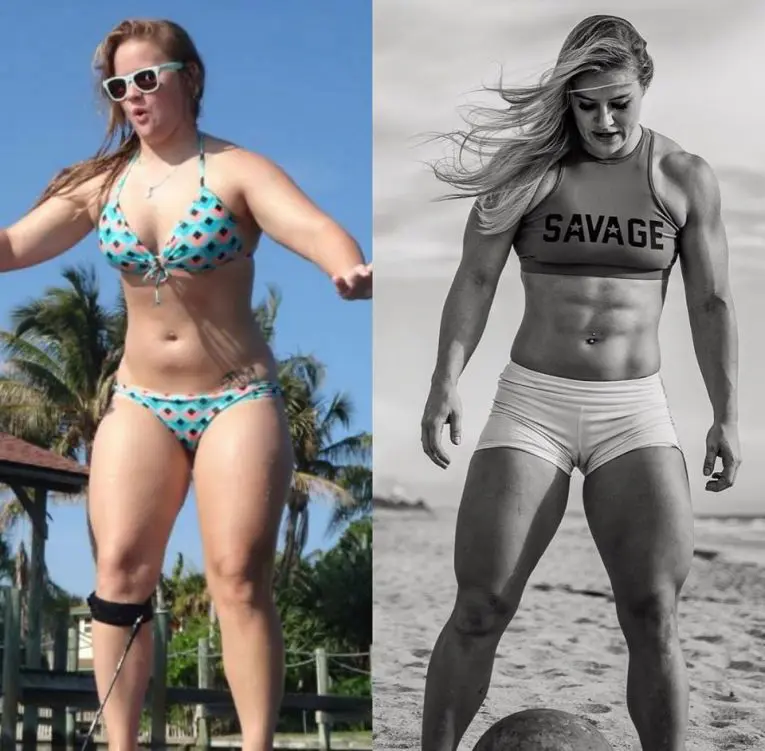
Not to mention, many studies have shown that people who lose weight rapidly and keep it off often have the most success with some form of social support and a focus on modifying the diet when necessary, as opposed to just focusing on exercise alone. (4, 5)
And while some research shows that it’s possible to lose weight fast and possibly even without negatively affecting muscle mass or resting metabolic rate (RMR), for most people, it’s harder to do than losing weight at a more slow and steady pace (6).
The general recommendation for safe and effective weight loss is 1-2 pounds (0.5kg and 1kg) per week. More studies have shown better results by adopting this approach compared to rapid weight loss, especially for keeping weight off in the long-term, and it’s arguably better for maintaining good health (7, 8).
You run the risk of losing more muscle mass, being deficient in certain nutrients, and possibly encountering other unpleasant side effects from losing weight too quickly.
Now, initially, when aiming for 1-2 lbs fat loss per week, you may lose more weight upfront due to water and glycogen loss and this is completely normal and safe. But after that, your rate of fat loss should stabilize at 1-2 lbs per week (9, 10).
Don’t crash diet and severely restrict your calories. When you choose the right foods and have a little patience, your body will thank you and you’ll feel a lot better about your progress.
If you want to know how many calories you need from protein, carbs, and fat to reach your goal weight and maintain muscle mass, use our macro calculator tool.
Also, try this 6-Week Bodyweight-Only Fat Loss Routine and see big results!
Protein is life
Level Up Your Fitness: Join our 💪 strong community in Fitness Volt Newsletter. Get daily inspiration, expert-backed workouts, nutrition tips, the latest in strength sports, and the support you need to reach your goals. Subscribe for free!
Protein is a macronutrient which means we need it in large amounts every day to sustain basic life. But because it’s the key macronutrient in maintaining muscle tissue, you’ll need to have somewhat of an idea of how much protein you need daily to keep as much muscle as possible while dropping fat lbs.
Learn more about the importance of protein here and use the protein calculator while you’re there to determine your ideal daily intake based on your goal/s.
Reduce stress
Chronic mental and physical stress is a major killer that affects your heart and many other normal healthy bodily processes. When the body is under stress due to lifestyle factors, the hormones adrenaline, and cortisol are released by the body as a defense mechanism.
This is fine in the short term. For example, your mother-in-law testing your patience during a family vacation, or taking a big test.
Once vacation is over or you’ve taken the test, the stress has more than likely subsided and cortisol levels return to normal.
But when you deal with constant mental stress on a daily basis like bad living circumstances, having a high-stress job, or suffering health wise, your body is always in fight or flight mode because it perceives a threat, and cortisol levels start to become more consistently elevated (11).
The hormones released during stress have a negative metabolic effect on skeletal muscle and consequently, cause the breakdown of muscle tissue. Cortisol is catabolic and inhibits protein synthesis which means the body has a much more difficult time trying to build and maintain muscle mass (12).
If you suffer from chronic stress, do yourself a favor and change many things about your lifestyle including your diet, sleep, activity levels, and social life, plus try to include meditation and if needed, don’t be ashamed to get counseling.
While this article is focused on maintaining muscle mass while losing body fat, managing stress is crucial for your health, in general.
Do some form of resistance training
Resistance training is an essential component of maintaining and building muscle even when your goal is fat loss. Plus, you’ll look so much better in (and out of) your clothing… your partner will be especially happy with your choice of recreational activity if you know what we mean.
In one study of sixteen older, overweight postmenopausal women; a calorie-restricted diet of 1.0 g protein/kg/day in combination with weight training prevented muscle loss, increased strength, and maintained metabolism function during body mass loss (13).
The benefits of resistance training for retaining muscle mass are well known, not to mention, it’s incredibly essential for maintaining overall structural health and has mental benefits as well.
As with any resistance training program, you want to make sure to challenge yourself by increasing the resistance in small increments on a weekly or biweekly basis at the minimum, but striving to squeeze out more reps is equally important. This is called progressive overload and is the most essential component of making gains!
Without sufficient training intensity, you’re selling yourself short on progress. Check out these 5 New Hypertrophy Workouts for Packing on Muscle Mass.
Have a plan before doing endless hours of cardio/don’t overtrain
Cardio is good for health and fitness. But the problem is doing too much cardio and not having the right nutrition habits to ensure that you maintain muscle. Plus, it’s not healthy to do tons of cardio and neglect to replenish nutrients lost in the process.
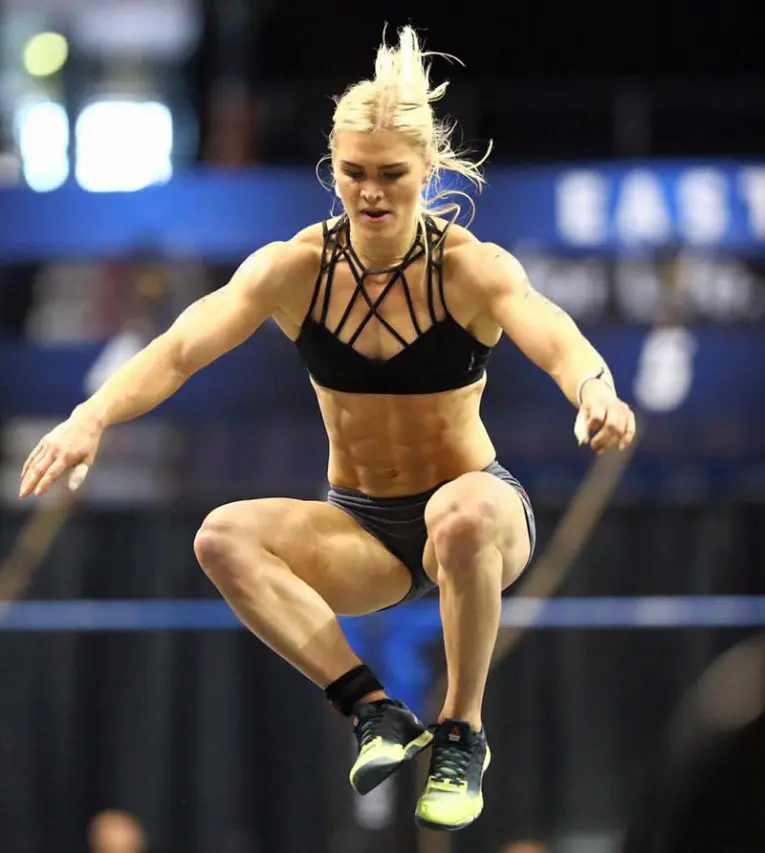
Cardio is a catabolic activity but it’s a tool that should be used accordingly. For example, maybe you went overboard with helpings on Taco Tuesday… do some cardio to burn off those extra calories.
What you don’t want to do is look at yourself in the mirror and decide that you’re going to starve yourself and do 5 hours on the treadmill each day. This is not realistic, not to mention, it’s both physically and mentally unhealthy.
The same applies to resistance training. A lot of exercisers simply use any opportunity possible to hit the gym or workout. Newsflash, muscles don’t grow in the gym. Also read: What Is Muscle Hypertrophy And Why It’s Important For You To Know
What the hell do you mean muscles don’t grow in the gym?
When you lift weights, do push-ups, etc, the muscles actually break down not build up. Rest, sleep, and good nutrition are what make muscles bigger and stronger. It’s really that simple. You can train hard and do your cardio, but make sure your nutritional habits are adequate to prevent overtraining and overuse injuries.
But how much do I need to rest? There’s no straightforward answer to this because it depends on the activity and duration. Learn more about recovery in this article on 8 Ways to Speed Up Recovery After Training.
Try calorie cycling
What is calorie cycling? It’s a method that involves incorporating a few higher-calorie days into your weight/fat loss regime to offset the potentially undesirable effects of the long-term nature of chronic low-calorie dieting.
As previously mentioned, dieting too strenuously can result in muscle loss, nutrient deficiencies, and compromised metabolic function. Calorie cycling can be extremely helpful in ensuring that you avoid these potential pitfalls.
One particularly useful advantage of this method is that you can fuel up on more carbs around training or physical activity (e.g., pre and post-workout). Carbs convert into glycogen in the body which is stored in the muscles and used for energy during physical activity. This also causes water to be stored in the muscles, subsequently contributing to strength performance and muscle preservation.
Refeeds is another term used to describe the process of calorie cycling as they’re essentially one and the same.
Read our article on how to use calorie cycling to achieve new levels of fat loss.
Use supplements
Supplements 100% have their place in any health and fitness regime. While they should never replace a good diet, they do help tremendously. For example, whey protein powder has been shown in countless studies to have a superior initial effect on muscle synthesis which is the building of proteins. That’s because it’s fast-digesting (14).
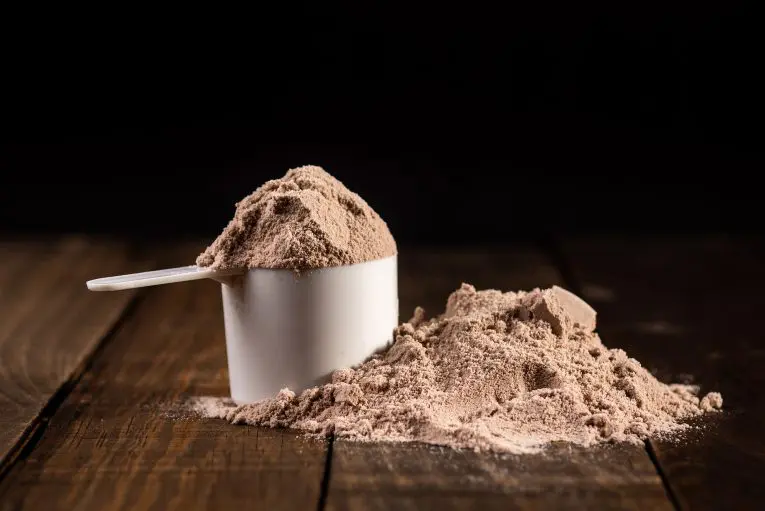
Whey also contains all nine essential amino acids including leucine, a branched-chain amino acid (BCAA) that is arguably the most important amino acid for stimulating muscle synthesis. In addition, whey has shown to be better than other forms of protein like soy for promoting lean muscle gains (15, 16, 17, 18, 19).
The best time to take whey is arguably immediately following a resistance training session. But it’s a quality source of protein and makes for a great addition to your diet anytime really.
Check out our article on the 10 Best Low-Calorie Protein Powders Reviewed for 2023
Plant-based protein powders are an excellent choice as well and will help to fill in your extra protein needs.
Another supplement and quite possibly the most impressive when it comes to supporting muscle growth and maintenance is creatine. This amino acid has been praised the world over for its muscle-enhancing, strength-increasing, performance-improving benefits.
We should also mention the hundreds of studies proving its efficacy and safety. While creatine is not an absolute necessity to prevent muscle loss while losing fat; you’d be hard-pressed to find a better, more effective ergogenic aid.
Related article: How To Load Creatine For Faster Muscle and Strength Gains
FAQs
What's a healthy body fat?
It varies but in general, a healthy range for women is anywhere from 14-33% and for men; it’s around 8-25%.
Can I lose more than 2 pounds a week and keep all of my muscle?
We can’t say yes or no because it depends on many factors such as age, gender, diet, genetics, experience level, etc.
Is losing weight too fast unhealthy?
It depends. Losing 1-2 lbs per week is recommended but initially, a lot of the weight will be water. Otherwise, it depends on the circumstances.
Wrapping Up
We hope that this guide on how to lose fat without losing muscle was extremely helpful, and we’re confident that the points we touched on are most important when it comes to doing so.
Anyone can lose fat and keep or even build new muscle if you pay attention to calories in, calories out, and your protein intake. There’s no rocket science involved here. Take it slow, train hard, eat good, sleep, get rid of the stressors in your life and as you gradually drop those fat pounds, you’ll look better than you thought you ever could.
Have questions about any of the information in this article? Leave your comments below. Want some workout ideas that’ll help with your muscle-building, fat-burning goals? Here are 20 Simple And Functional Workout Finishers For Muscle Gains, Strength, and Fat Loss.

